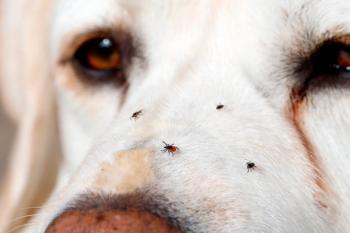
- dvm360 November 2021
- Volume 52
Improving your “human skills” with communication

Communication among members of the veterinary team or between the veterinary team and clients can sometimes become tense, but we can improve the outcomes by understanding key principles of communication and learning to de-escalate a situation.
Alyssa Mages, BS, CVT, and Caitlin Keat, MSM of Empowering Veterinary Teams, are reframing the conversation around communication, starting with reclassifying it as a “human skill,” instead of the more commonly used “soft skill.” In their session at the recent Fetch dvm360® Kansas City conference, they discussed how to improve these essential human skills through key communication.
Communication goals and styles
To have effective communication, we must first understand the goals of the conversations we are having, whether with clients, team members or others in our lives. Goals of successful conversation can include conveying an understandable and factual message, maintaining a friendly, open, and honest conversation style, and being memorable to create a lasting impression.
Mages and Keat discussed 4 types of communication: controlling, promoting, analyzing, and supporting.1 Understanding and identifying these styles of communication can help you to best engage with those you are talking to:
- Controlling is typically straight to the point and assertive. This type of communication may come across as aggressive, but it is not intended that way in most situations. To best communicate with these individuals, know your facts and stick to the topic at hand.
- Promoting is enthusiastic, engaged and centers around people and experiences. Connecting with this type of communicator can be done through asking and answering personal questions, but you will probably need to be the one to keep the conversation on track.
- Analyzing involves in-depth conversations and tends to be fact-based and inquisitive. Be ready to answer questions and stay patient while the other person processes the answers and facts.
- Supporting tends to focus on problem solving and connection. This style of communicator tends to be more laid back, excels at conflict resolution, and relies on establishing trust.
It is important to note that in many conversations, multiple styles will be used by both parties. To be good communicators and effectively engage with our audience, we must learn to adapt and use different styles depending on the situation.
Phone communication
Many interactions in the veterinary hospital start before the client even reaches the doors of our clinic. Our client service representatives (CSRs) and veterinary team members are often communicating with the clients over the phone prior to or after their appointment and can set the tone for the visit.
Having a script to follow can help to guide these conversations, as well as in-person conversations. Scripting does not mean that the same words are used every time in every situation, but it provides a baseline for where to begin.
Mages and Keat want veterinary teams to know that it is important to maintain phone etiquette by confirming who you are talking to and attempt to make a personal connection. They also recommend the phrase “I’ll be right with you,” instead of “would you mind holding?” or “please hold” as a gentler way to place a person on hold.
When speaking to a client on the phone, and especially when performing teletriage, Mages and Keat suggest remembering the 3R’s: receive, record, and relay. This ensures that no information is missed or lost as it is passed from one member of the veterinary team to another.
De-escalation
Mages and Keat note that in the current environment, every member of the veterinary team, and their clients, are under large amounts of stress. When stress levels run high, conversations can go in the wrong direction quickly and anger can ensue. In these situations, it is important that we de-escalate the situation, which requires what Mages and Keat refer to as a “reduction of the intensity of a conflict of a potentially violent situation.”
The first step in de-escalating a situation where tempers are flaring, whether it be between client and staff or between staff members, is to recognize that it is happening. Body language and other nonverbal communication can be helpful to notice as they can be early indicators that we are not connecting with the person we are conversing with.
Once we have recognized that a conversation is heading into a heated place, we must pay attention to our own emotions and keep them in check. Being able to do this is part of emotional intelligence. By understanding and controlling our own emotions, we can alter our communication style, tone, and body language to respond to the situation. Mages and Keat believe that communication is a two-way street and if you can manage your reaction it will help to de-escalate the interaction.
De-escalation can be done in 3 ways, say Mages and Keat: direct, delegate, or defer. Directing a situation involves taking control and telling the other person what the next steps are. Delegating means stepping away and sending someone else into the conversation. Deferring means asking to postpone the conversation (as long as it is a non-life-threatening situation) until a later time when emotions have calmed. Each of these techniques have their place and which option is chosen will depend on the situation and the personalities involved.
Take-home points
Successful communication requires us to use many different styles of communication depending on who we are engaging with and the situation we are in. Learning to recognize communication styles, when we are connecting with someone, and when we aren’t, will help all members of the veterinary team to better communicate with one another and with their clients.
References
- Udice, Kristina, and Tupe Asis. “4 Communication Styles and How They Play out in the Workplace.” Jobs, Company Reviews, Career Advice and Community, 2 Apr. 2019, fairygodboss.com/career-topics/communication-styles#.
Kaitlyn Boatright, VMD, is a 2013 graduate of the University of Pennsylvania, is a practicing veterinarian and freelance speaker and author in western Pennsylvania. She is passionate about mentorship, education, and addressing common sources of stress for veterinary teams and recent graduates. Outside of clinical practice, Dr. Boatright is actively involved in organized veterinary medicine at the local, state, and national levels.
Articles in this issue
almost 4 years ago
National Pet Diabetes Month: Raising awareness and making stridesabout 4 years ago
A breakthrough joint supplement for dogs and catsabout 4 years ago
Dental Pain and Inflammation—Acute and Chronicabout 4 years ago
Veterinary technicians embrace their rolesabout 4 years ago
Understanding and diagnosing canine hypothyroidismabout 4 years ago
Embark Veterinary releases first-ever purebred dog DNA kitabout 4 years ago
Zoetis adds digital cytology testing to Vetscan ImagystNewsletter
From exam room tips to practice management insights, get trusted veterinary news delivered straight to your inbox—subscribe to dvm360.






